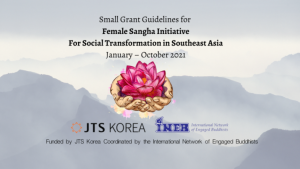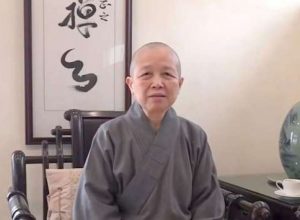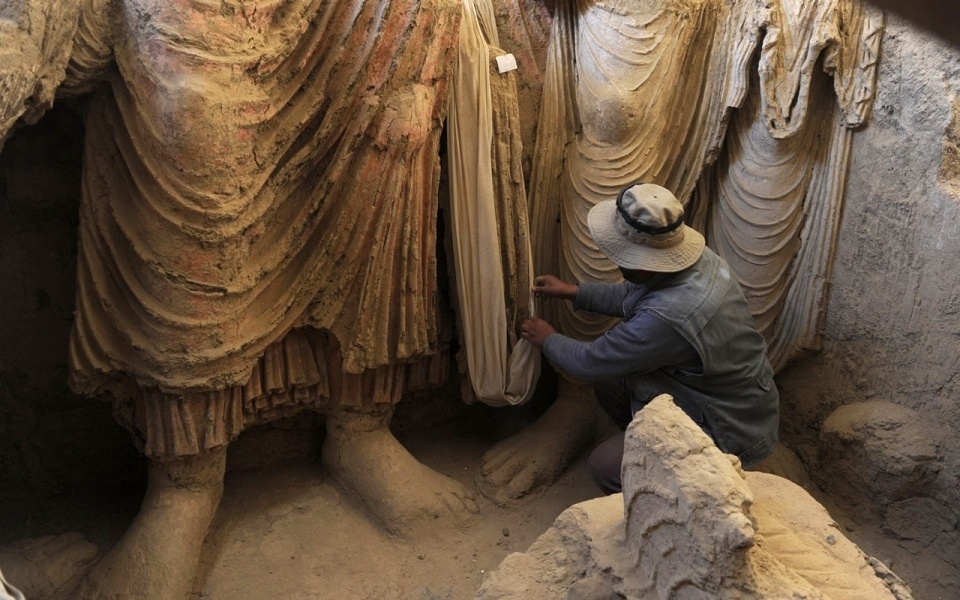
In a barren region of Afghanistan’s Logar Province, some 40 kilometers from Kabul, lies one of the world’s most significant archeological excavations—the remains of the ancient settlement of Mes Aynak, once a city on the fabled Silk Road network of trade routes that facilitated the exchange of cultures and spiritual traditions across the ancient world. This remarkable historical treasure trove, which French archaeologist Philippe Marquis described as “probably one of the most important points along the Silk Road,” includes more than 400 Buddhist statues, stupas, and a 40-hectare monastery complex, along with forts, and a citadel spread over 19 separate archaeological sites. (The Sydney Morning Herald)
According to Afghanistan’s Ministry of Mines and Petroleum, the site is also home to the world’s second-largest copper deposit, reportedly representing estimated reserves of some 5.5 million tonnes of high-grade copper ore (Mes Aynak means “little source of copper” in Pashto), and two state-owned Chinese mining giants, Metallurgical Group Corp. (MCC) and Jiangxi Copper, are in the initial stages of establishing a mine to extract the underground wealth.
The tragedy of this clash of civilizations is told in heart-wrenching detail in the 2014 documentary Saving Mes Aynak, by Brent Huffman, an associate professor at the Medill School of Journalism at Northwestern University. Recently picked up by Netflix, Saving Mes Aynak centers on the remarkable race against time by Afghan archaeologist Qadir Temori to save the 5,000-year-old site near the border with Pakistan, which has so far been only partially excavated. Some believe future discoveries at the site could have the potential to redefine the history of Afghanistan and even the history of Buddhism itself.
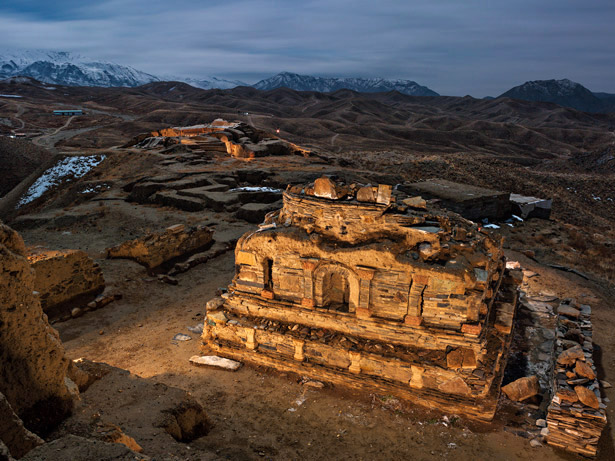
Aside from the remarkable and extensive remains of an ancient Buddhist settlement that dates to the Kushan Gandhara period (roughly contemporary with the Roman Empire and China’s Western Han dynasty), further archaeological evidence points to civilizations in the area flourishing as early as the 3rd century BCE. Discoveries at the site include clues pointing to an ancient monastic cult that revered Siddhartha Gautama before he was enlightened, and manuscripts mentioning the presence of troops led by Alexander the Great.
Mes Aynak would qualify as a World Heritage site if the government of Afghanistan were to apply for that status, said archaeologist and UNESCO advisor Tim Williams. “This is an outstanding and complex archaeological landscape, with astounding quality of preservation.” (CNBC)
In 2007, the administration of then-president Hamid Karzai granted a 30-year mining lease to MCC for US$3 billion, the largest foreign investment and private business venture in Afghanistan by any country. MCC plans to extract more than US$100 billion-worth of copper that lies directly beneath the ancient city, however various factors, among them a decline in the market price for copper and a deteriorating security situation, have led to repeated delays in the extraction (originally scheduled for January 2013), which would mean the complete destruction of the site.
With the Afghan government unlikely to turn its back on this lucrative deal, archaeological excavations have been underway since 2012 to salvage as many artifacts as possible—to date some 2,300 artifacts have reportedly been removed to the National Museum of Afghanistan. However, these efforts have been plagued by threats from the Taliban and opportunistic looting.
“Both the Taliban and Trump have pledged their support to mine Mes Aynak, so that combined terrible news is pushing the mining company closer to destroying the site,” Prof. Huffman told Buddhistdoor. “Looting is also happening at Mes Aynak, so the site needs our help.”
After years of false starts, the Taliban was reported to have given its approval in November for the mammoth mining project to go ahead, pledging to provide security for workers at the site. The Afghan government later dismissed the proclamation. In December last year, then-president-elect Donald Trump, in a telephone call with Afghan President Ashraf Ghani Ahmadzai, indicated support and assistance from his administration for the extraction of Afghanistan’s wealth of natural resources.
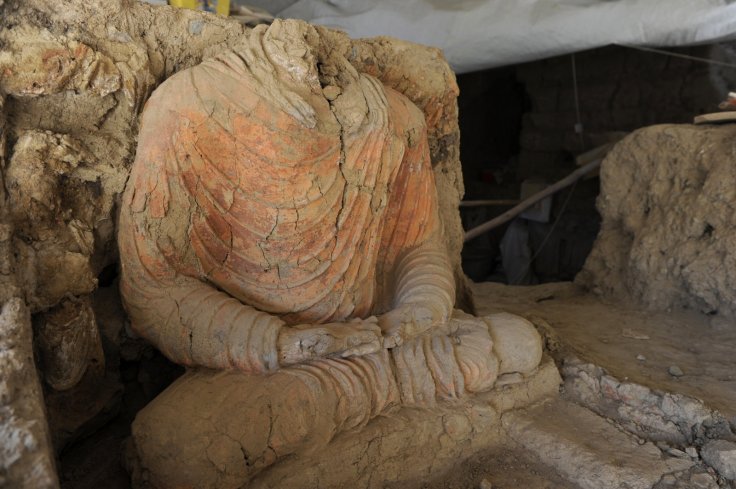
From ibtimes.co.uk
The project has also been marred by the forced relocation of communities living in the area and the prospect that copper mining on this scale also brings with it massive environmental repercussions.
“There will be an enormous toxic crater where no one can live again. Water reservoirs that store drinking water and flow into Kabul and Pakistan will be permanently polluted,” said Prof. Hoffman. (International Business Times)
See more
China plans to destroy an ancient Buddhist city to get the copper buried there (CNBC)
China gets an all-clear from the Taliban to mine for copper in Afghanistan (CNBC)
China to destroy 5,000-year-old Buddhist city in Afghanistan for copper extraction (International Business Times)
Documentary Reveals Plans to Destroy Ancient Chinese City (Yibada)
Afghan Taliban give green signal to China for digging $3 billion copper mine (Daily Pakistan)
Trump vows support to help unearth Afghanistan’s massive natural resources (Khaama Press)
The Story Behind China’s Long-Stalled Mine in Afghanistan (The Diplomat)
Ancient treasures on shaky ground as Chinese miners woo Kabul (The Sydney Morning Herald)
Saving Mes Aynak
Related features from Buddhistdoor Global
Buddhistdoor View: The Case for Rebuilding the Bamiyan Buddhas to Their Original Glory
Buddhistdoor View: Heritage Conservation








